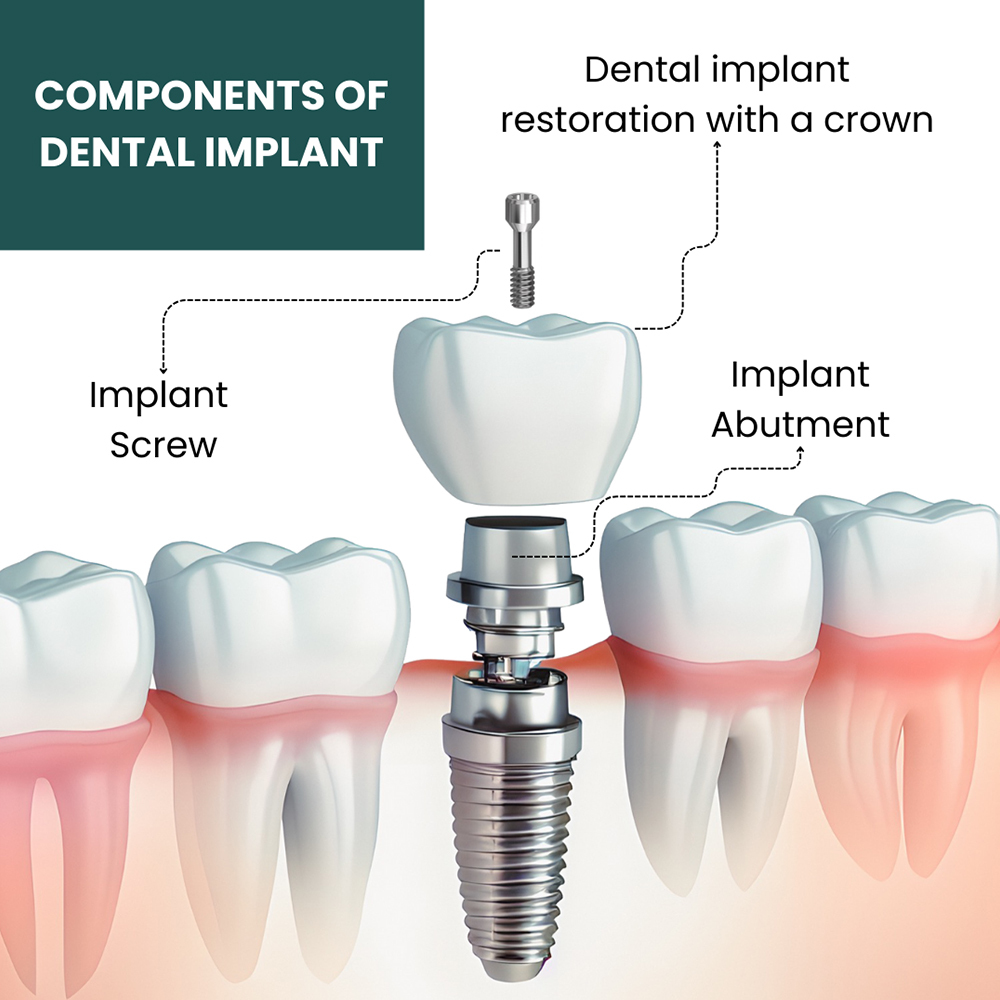Some Ideas on Dental Implants You Need To Know
6 Easy Facts About Dental Implants Shown
Table of ContentsHow Dental Implants can Save You Time, Stress, and Money.Get This Report about Dental ImplantsThe Buzz on Dental ImplantsSome Known Details About Dental Implants
are clinical tools operatively implanted right into the jaw to recover an individual's ability to eat or their look. They give support for artificial (fake) teeth, such as crowns, bridges, or dentures. When a tooth is shed as a result of injury or disease, a person can experience problems such as quick bone loss, defective speech, or changes to eating patterns that lead to pain.
Framework of The Oral Implant System selecting dental implants, speak with your dental supplier regarding the potential benefits and risks, and whether you are a prospect for the treatment. Things to take into consideration: Your overall health and wellness is an essential aspect in determining whether you are an excellent prospect for oral implants, how much time it will take to heal, and exactly how long the dental implant may remain in location.
Smoking cigarettes might impact the healing process and lower the long-term success of the dental implant. The healing procedure for the implant body may take several months or longer, throughout which time you generally have a momentary abutment in area of the tooth. the dental implant treatment: Thoroughly follow the oral health directions offered to you by your dental service provider.
The 45-Second Trick For Dental Implants
Implant failing can cause the demand for one more surgery to deal with or replace the implant system. Recovers the capacity to chew Brings back aesthetic look Assists maintain the jawbone from reducing as a result of bone loss Protects the health and wellness of the bordering bone and periodontals Aids maintain adjacent (close-by) teeth steady Improves lifestyle Damage to surrounding natural teeth throughout dental implant positioning Injury to the surrounding cells during surgery, such as sinus perforation Injury throughout surgical treatment (for example, fracture of bordering jawbone) Inadequate feature, such as seeming like the teeth do not attack together generally An experience that the tooth is loosened or turning in place resulting from an abutment screw loosening Implant body failure (looseness of the implant body) as a result of systemic infection, which might be most likely in patients with unchecked diabetes mellitus as a result of regional infection in bone and gums sustaining the implant body due to postponed recovery, which may be extra most likely in patients who smoke Problem cleansing the gum tissues around the implant, resulting in inadequate oral hygiene Unattended gum condition Post-surgical feeling numb because of nerve impingement or damage Always alert health and wellness care suppliers and imaging specialists that you have dental implants prior to any kind of magnetic resonance imaging (MRI) or x-ray procedures.
FDA is not mindful of any type of adverse occasions reported for MRI or x-ray treatments with dental implants. Dental implants systems are generally made of materials that adhere to worldwide consensus standards of the International Organization for Standardization (ISO) or ASTM International. These requirements have details of what makes a safe material.
Dental dental implant systems are assessed according to worldwide consensus criteria. Biocompatibility screening, to show that physical contact with the tool does not trigger difficulties like irritation or allergic reaction, is part of the assessment that helps make sure the products in the oral implant system are safe and do not trigger negative results when dental implanted in individuals.

Unknown Facts About Dental Implants
Some individuals are not eligible for dental implant surgical procedure. It is for dental doctors to operate individuals with: intense illnessuncontrollable metabolic diseasebone or soft cells illness or infectionIf these concerns are resolved, a person can have the surgical treatment. Dental Implants. In, oral doctors avoid operating on individuals with: If individuals with any one of the above go through oral implant surgical procedure, there is a higher risk of the dental implant stopping working
Some individuals have a jawbone abnormality that stops adequate bone for a dental implant from creating. In such cases, a specialist might need to do a ridge alteration. This involves lifting the gum to expose the area of deformed bone. The surgeon will go then utilize a bone or bone alternative to repair and accumulate the location.
Oral dental implant surgical treatment is a tailored procedure. It's not the very same for everybody. The following gives a basic summary of what you can anticipate your dentist, dental surgeon, periodontist or prosthodontist to do: Put the implant operatively. Offer you time to heal. Affix the article and final crown, bridge or denture.
Next off, your specialist will meticulously put the dental implant into your jaw. Your cosmetic surgeon will certainly rearrange your gum tissues and close the laceration with stitches (Dental Implants). If your implant is near the front of your mouth, your dental professional will make a temporary tooth for you Our site to put on until you recover. By doing this, you will not have a gap in your smile while you recuperate.
The 5-Second Trick For Dental Implants
Your company can inform you what to expect in your situation. Throughout the healing phase, your jawbone ought to fuse to the oral implant. This process, called osseointegration, is vital for stability and long-term success. This process can take anywhere from 3 to 9 months. In some situations, it might take much longer.
As soon as your implant heals, your dental practitioner can affix the joint (little adapter post) and your last repair (crown, bridge or denture). This normally takes about one hour to finish and might require a second minor surgical treatment. You should not feel any type of discomfort during your oral implant treatment because your supplier will certainly utilize drug to numb your gums.